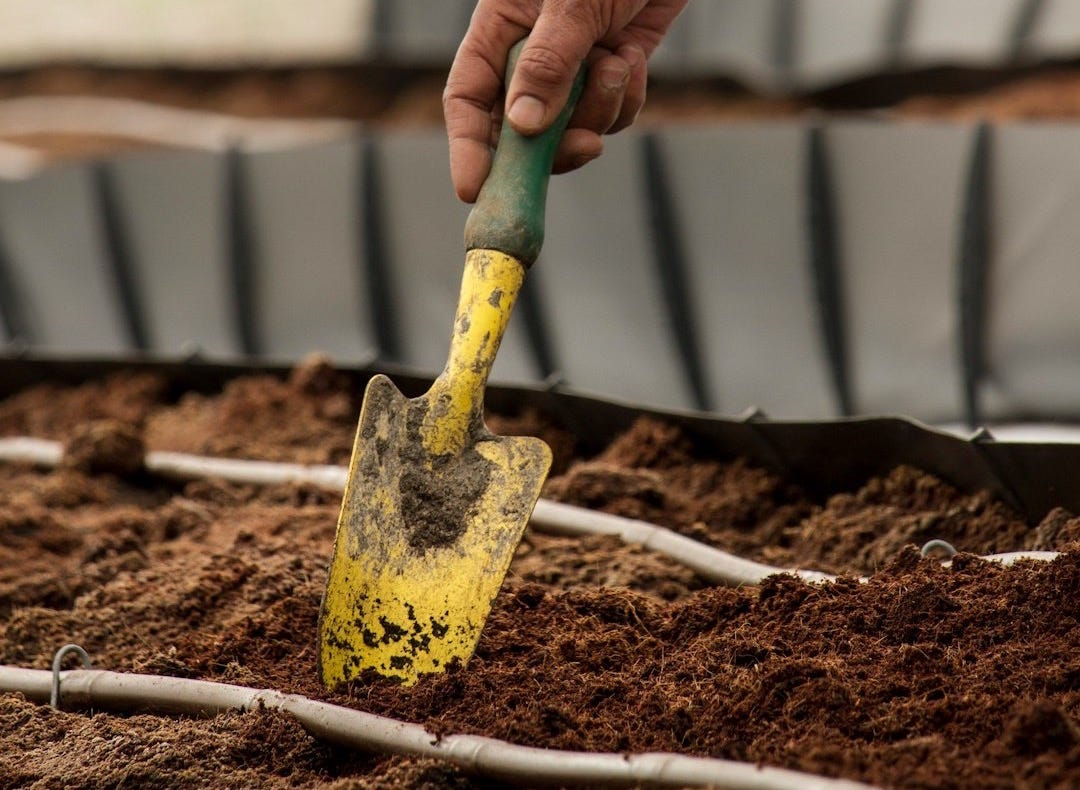Is There A Best Time To Mix Compost Into Garden Soil?
Proper compost can almost magically enrich soil, improve plant health, and boost yields. But when planning your spring setup, does it matter when you mix compost into your soil?

The short answer is, advanced timing isn’t critical in most situations. But you can get better results by paying attention to a few things, including what you should and should not do.
Spring
For most gardeners, early spring is the ideal time to mix compost into garden soil. As the ground thaws and the growing season approaches, adding compost 2-4 weeks before planting gives all the benefits compost brings time to integrate with the soil. This time allows beneficial microbes to activate and nutrients to become available to young plants.
Spring applications of compost are especially effective for annual vegetable gardens or flower beds. Mixing in a 1-to-3 inch layer of rich compost and working it into the top 6-8 inches of soil provides a nutrient-rich foundation for seeds and transplants. This also improves soil structure, enhancing drainage and aeration after winter compaction.
Fall
If you’re at the end of the growing season, it’s still a great idea to spread compost over the soil and work it in before the ground freezes. Over the winter, the compost continues to break down, enriching the soil with organic matter and preparing it for spring planting. This method is particularly beneficial for heavy clay soils or depleted beds that need a slow, steady infusion of nutrients.
Fall applications also support soil health by feeding earthworms and microorganisms during milder winter days. Cover the area with mulch, straw, or even leaves, to protect the soil and compost from erosion or nutrient leaching caused by rain or snow.
Mid-Season
While spring and fall are the most common times, you can mix compost into the soil during the growing season if your plants require some attention. For example, if you notice stunted growth, yellowing leaves, or poor yields, a light side-dressing of compost or other fertilizer around established plants can help. Scratch a thin layer (about ½ inch) into the soil near the root zone, but be careful not to disturb shallow roots. This works well for perennials, fruit bushes, or long-season crops like tomatoes and peppers.
IMPORTANT: Avoid over-application of compost in mid-season. Too much compost can overwhelm plants with nitrogen, leading to excessive leaf growth at the expense of flowers or fruit.
New Beds and Lawns
If you’re starting a new garden bed, timing is less rigid. Mix compost into the soil when you begin the project, whether it’s spring, summer, or fall. For a new bed, aim for a 1:1 or 1:2 ratio of compost to native soil, depending on how poor the existing soil is.
For lawns, early spring or late summer (around August or September in the U.S.) is best. Spread a thin layer of finely sifted compost (¼ to ½ inch) over the grass and rake it in. This top-dressing improves soil health without smothering the turf.
Climate Considerations
Your local climate plays a big role in timing. In warm regions with year-round growing seasons, like parts of the southern U.S., you can mix compost into soil any time it’s not excessively wet or dry. In contrast, northern gardeners with short growing seasons should prioritize spring and fall to align with frost dates. Check your USDA Hardiness Zone or local frost calendar for guidance.
Compost Quality Matters
No matter the season, ensure your compost is fully decomposed before mixing it into the soil. "Finished" compost looks dark and crumbly, with an earthy smell and no recognizable food scraps or plant material. Adding unfinished compost can rob plants of nitrogen as it continues breaking down, so if your pile isn’t ready, let it mature a bit longer.
Final Thoughts
The end goal is nutrient-rich soil. While it’s not critical to mix in compost a certain number of days before planting your spring design, making sure you have a healthy environment for plants to thrive is important to the longevity of your growing season. It can mean more vibrant flowers or better tasting fruits and vegetables.
If you’re reusing soil from last year, you definitely want to add some type of fertilizer. Pay attention to the soil’s condition, the current and projected weather, and the needs of what you’re planting. Creating a healthy soil mix is not exactly rocket science, but it’s still science, and can make the difference between disappointing results or a thriving garden or flower bed.


